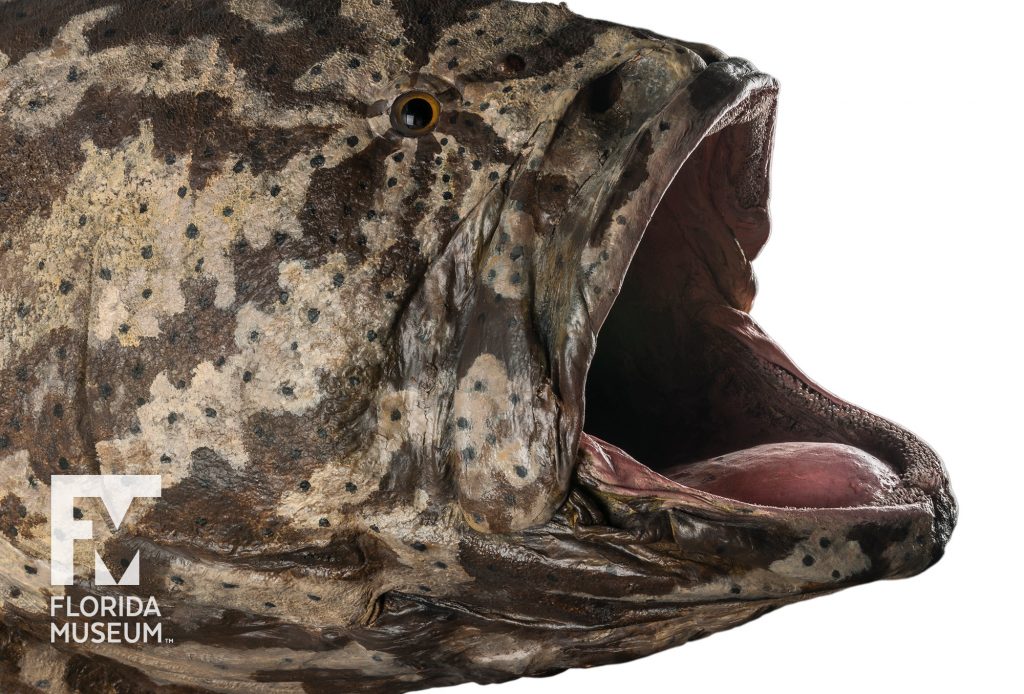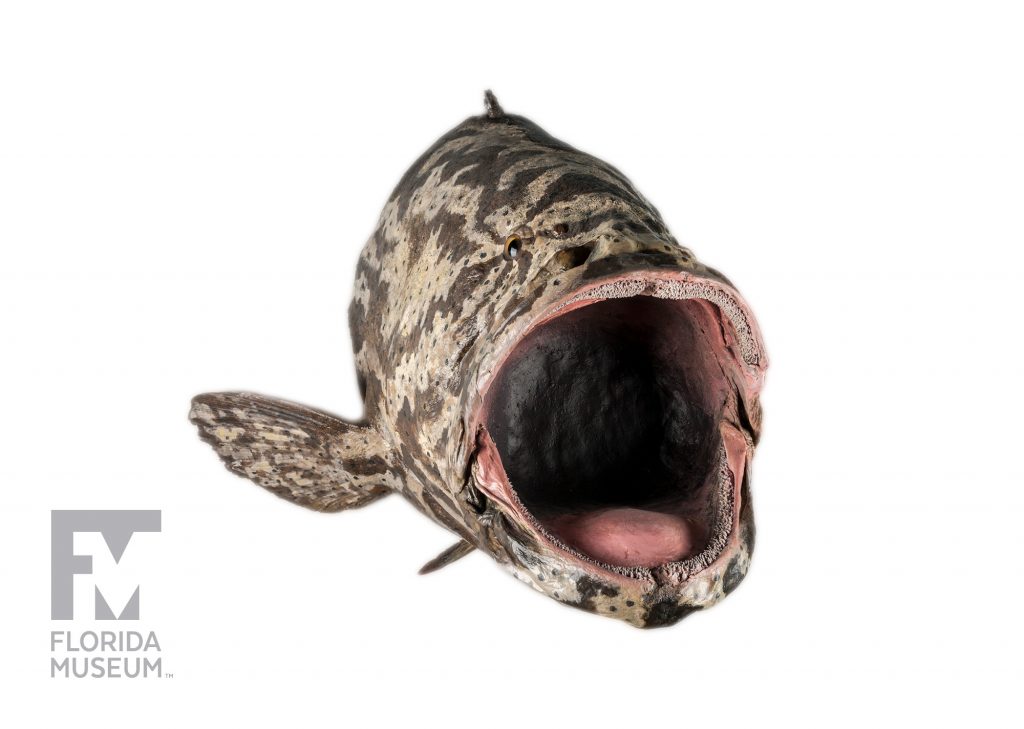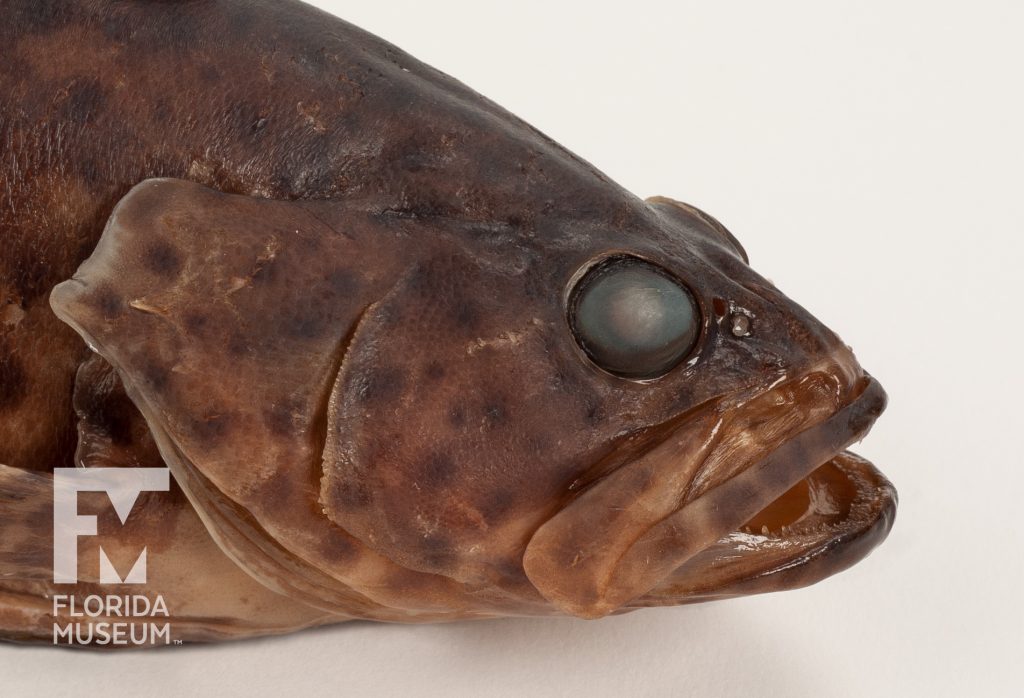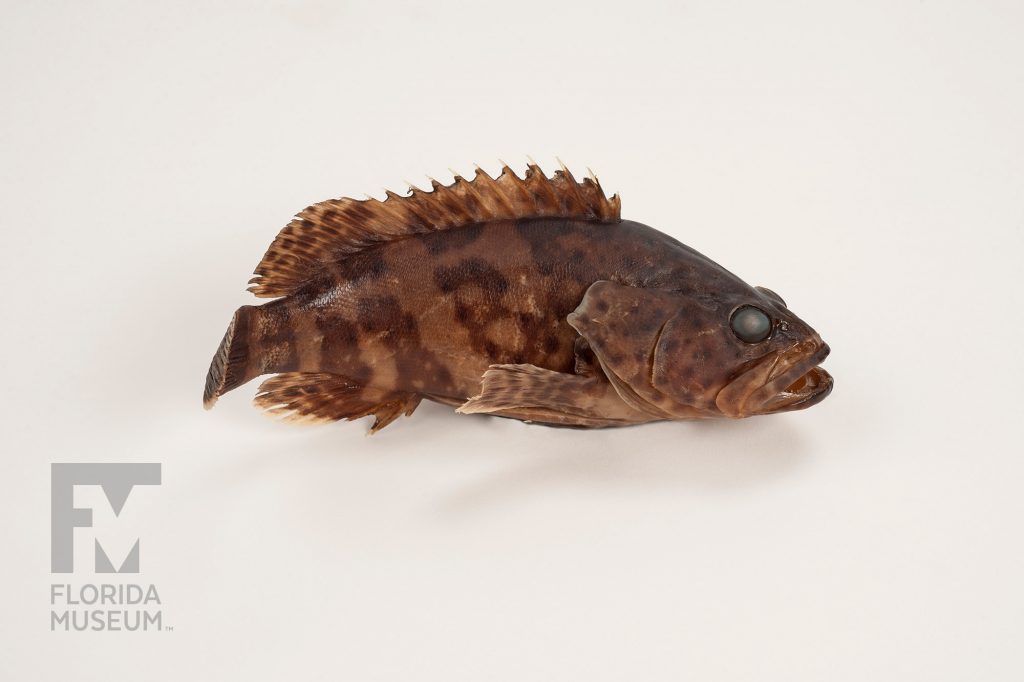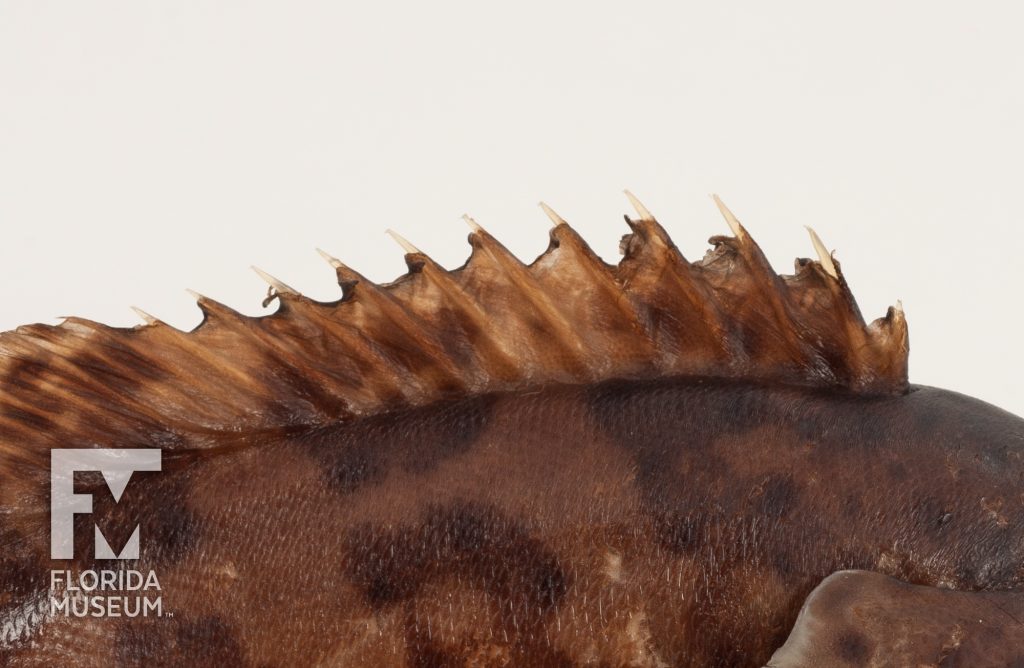Weighing as much as 800 pounds and growing up to 8 feet, Goliath Grouper are vulnerable to overfishing. Staggering population declines led to their complete protection from harvest in U.S. waters since 1990. Though they have made a comeback in Florida, conservationists worry their populations haven’t fully recovered.
Summary
Goliath Grouper (Epinephelus itajara)
Collection information unknown
Collection
Story
Weighing as much as 800 pounds and reaching lengths up to 8 feet, Goliath Grouper are vulnerable to overfishing. Huge population declines led to total protection from harvest in U.S. waters beginning in 1990. The species has made a comeback in Florida, with some calling for the permitting of a regulated fishery, though conservationists worry that current populations haven’t fully recovered.
The origin of this taxidermied Goliath Grouper is unknown, but the specimen is something of a Museum mascot.
Many groupers are protogynous hermaphrodites, a fancy way of saying they attain sexual maturity first as females, but switch to the male sex later in life. Goliath Grouper are believed to be protogynous hermaphrodites, but the most direct evidence, that of individual fish transitioning from female to male, has not been documented. Additionally, the largest size classes of Goliath Groupers include both females and males.
Robert Robins
Collection Manager, Ichthyology*
Florida Museum of Natural History
Additional Information
- Species profile: Goliath Grouper (Epinephelus itajara)
Exhibit
On display Sept. 23, 2017-Jan. 7, 2018, Rare, Beautiful & Fascinating: 100 Years @FloridaMuseum celebrated the Museum’s rich history. Each Museum collection was asked to contribute its most interesting items and share the stories that make them special. Though the physical exhibit is closed, this companion website remains online, providing an opportunity to experience the Florida Museum’s most treasured specimens.
Exhibit Area: On the Brink
Theme: Success Story
 Want to see more? Explore more than 300 breathtaking color photos of plants, animals, fossils and cultural heritage materials from the Florida Museum of Natural History’s collections in the award-winning book All Things Beautiful available from the University Press of Florida.
Want to see more? Explore more than 300 breathtaking color photos of plants, animals, fossils and cultural heritage materials from the Florida Museum of Natural History’s collections in the award-winning book All Things Beautiful available from the University Press of Florida.
*This title was accurate at the time the exhibit was on display in 2017. Please visit the collection website to verify current staff and student information.
